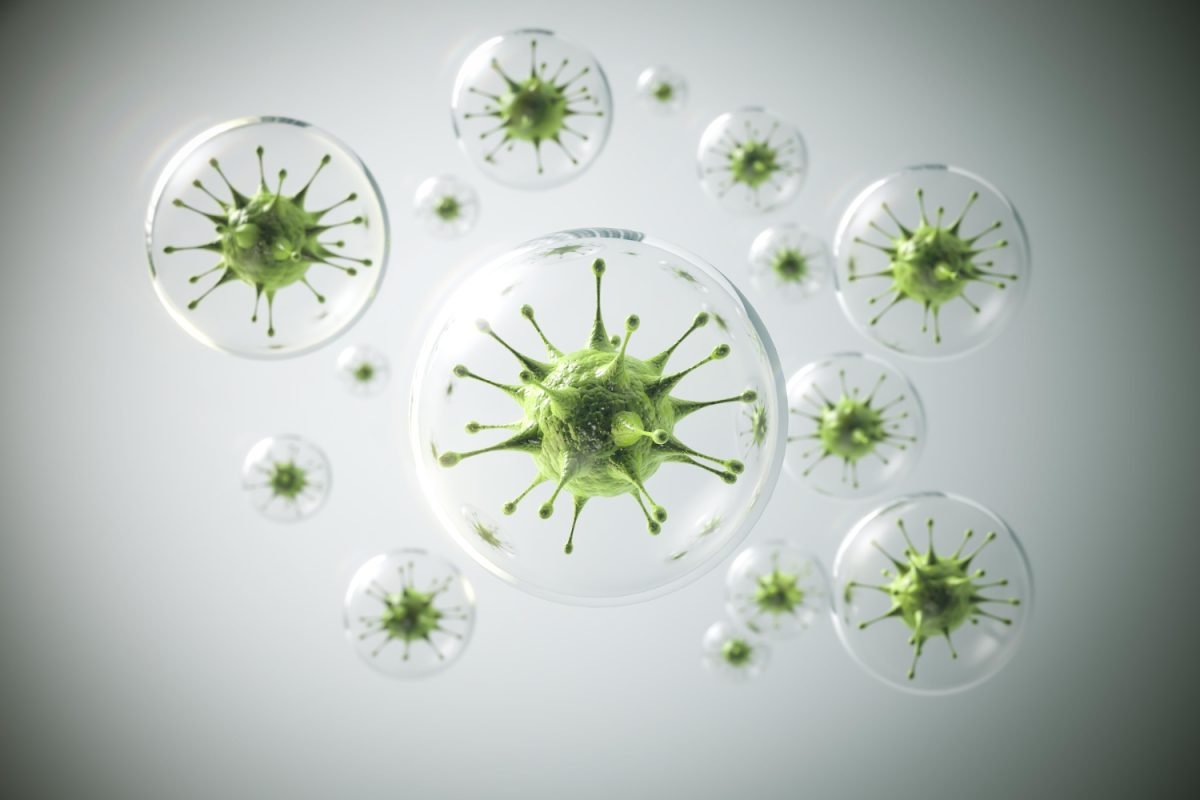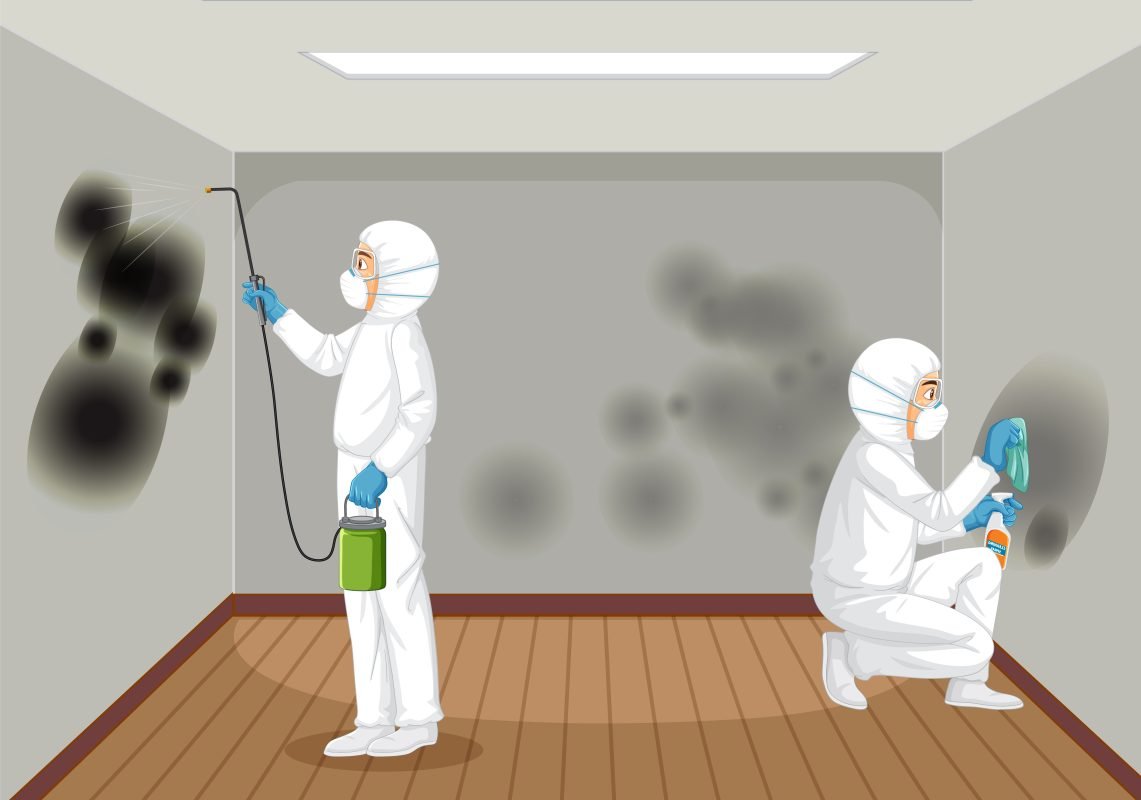Black vs. white mold – two common household intruders that can wreak havoc on your home. But do you know the difference between them? In this article, we will unmask the distinctions between black and white mold and teach you how to identify them.
Black mold, scientifically known as Stachybotrys chartarum, is notorious for its toxic spores that can cause serious health problems. It thrives in damp, humid environments and typically appears as black or greenish-black patches. On the other hand, white mold, also known as Aspergillus or Penicillium, appears as a powdery substance with a white or light gray color. It is less toxic than black mold but can still pose health risks, especially for individuals with allergies or respiratory issues.
Differentiating between black and white mold is crucial for effective mold remediation. By understanding their distinct characteristics, you can take the necessary steps to protect your home and your health.
So, buckle up and get ready to dive into the world of black and white mold as we unravel the differences between these sneaky invaders and equip you with the knowledge to identify them.
Understanding the differences between black and white mold
Mold is a common problem in many households, but not all molds are created equal. Understanding the differences between black and white mold is crucial for effective mold remediation. Let’s explore the distinctions between these two sneaky invaders.
Black mold, scientifically known as Stachybotrys chartarum, is notorious for its toxic spores that can cause serious health problems. It thrives in damp, humid environments and typically appears as black or greenish-black patches. Black mold is often slimy or wet to the touch and has a distinct musty odor. It is commonly found in areas with water damage, such as leaky roofs, basements, and bathrooms.
On the other hand, white mold, also known as Aspergillus or Penicillium, appears as a powdery substance with a white or light gray color. Unlike black mold, white mold is dry and powdery to the touch. It can grow on various surfaces, including wood, drywall, and insulation. White mold is less toxic than black mold but can still pose health risks, especially for individuals with allergies or respiratory issues.
Identifying black and white mold correctly is essential for determining the appropriate course of action. Let’s delve into the specifics of identifying each type of mold.
Health risks associated with black and white mold
Both black and white mold can have adverse effects on your health, but black mold is considered more dangerous due to its toxicity. Exposure to black mold spores can lead to a range of health problems, including respiratory issues, allergic reactions, headaches, fatigue, and even neurological symptoms in severe cases. Individuals with compromised immune systems or pre-existing respiratory conditions are particularly susceptible to the harmful effects of black mold.
Although white mold is less toxic, it can still cause health issues, especially for those with allergies or asthma. Exposure to white mold spores may result in respiratory symptoms, such as coughing, sneezing, wheezing, and nasal congestion. Prolonged exposure to either type of mold can exacerbate existing health conditions and cause long-term health problems.
It’s important to note that everyone reacts differently to mold exposure, and some individuals may be more sensitive than others. If you suspect mold growth in your home, it’s best to err on the side of caution and take appropriate measures to address the issue promptly.

Identifying black mold
Identifying black mold is crucial for taking immediate action to protect your home and your health. Here are some key indicators to help you identify black mold:
1. Color and appearance: Black mold typically appears as black or greenish-black patches. It is often slimy or wet to the touch and has a distinct musty odor. If you notice any areas in your home with these characteristics, it’s essential to investigate further.
2. Location: Black mold thrives in damp, humid environments. It is commonly found in areas with water damage, such as leaky roofs, basements, bathrooms, and areas affected by flooding. Pay close attention to these areas, as they are more prone to black mold growth.
3. Texture: Black mold is often slimy or wet to the touch. If you come across any mold that feels slimy or wet, it’s a strong indication of black mold.
4. Smell: Black mold has a distinct musty odor. If you detect a musty smell in your home, especially in areas with water damage or high humidity, it could be a sign of black mold.
If you suspect black mold in your home, it’s important to take precautions and avoid direct contact with the mold. Consider seeking professional help for proper mold testing and remediation.
Identifying white mold
White mold may not be as toxic as black mold, but it can still pose health risks and should be addressed promptly. Here are some key indicators to help you identify white mold:
1. Color and appearance: White mold appears as a powdery substance with a white or light gray color. It is dry and powdery to the touch, unlike the slimy texture of black mold. If you notice any areas in your home with these characteristics, it’s important to investigate further.
2. Location: White mold can grow on various surfaces, including wood, drywall, insulation, and even food. Pay close attention to areas with high moisture levels, such as bathrooms, kitchens, and basements, as they are more susceptible to white mold growth.
3. Powdery texture: White mold has a powdery texture, similar to flour or baking soda. If you come across any mold that feels dry and powdery, it could be white mold.
4. Smell: While white mold may not have a distinct odor like black mold, it can still emit a musty smell. If you notice a musty odor in your home, especially in areas with high humidity or moisture, it’s worth investigating for white mold.
If you suspect white mold in your home, it’s important to take appropriate measures to address the issue. Consult with professionals for proper mold testing and remediation to ensure the safety of your home and your health.
Common causes of black and white mold growth
Understanding the common causes of black and white mold growth can help you prevent their occurrence in your home. Here are some of the main factors contributing to mold growth:
1. Moisture: Mold thrives in moist environments, so excessive moisture is one of the primary causes of mold growth. Leaky pipes, roofs, or windows, as well as high humidity levels, can create the perfect breeding ground for mold.
2. Poor ventilation: Inadequate ventilation can lead to moisture buildup, creating an ideal environment for mold growth. Areas with poor airflow, such as bathrooms, kitchens, and basements, are especially prone to mold problems.
3. Water damage: Any form of water damage, whether from leaks, floods, or condensation, can promote mold growth. It’s crucial to address water damage promptly and thoroughly dry affected areas to prevent mold from taking hold.
4. Damp materials: Mold needs organic materials to grow and thrive. If your home has damp materials, such as wet carpeting, insulation, or wood, it provides an excellent food source for mold, increasing the likelihood of growth.
By addressing these underlying causes, you can significantly reduce the risk of black and white mold growth in your home.
Preventing black and white mold in your home
Prevention is key when it comes to mold control. Here are some effective measures to prevent black and white mold growth in your home:
1. Control moisture: Regularly check for and repair any leaks in your plumbing, roof, or windows. Use dehumidifiers in areas with high humidity levels, such as basements and bathrooms. Ensure proper ventilation in all rooms to reduce moisture buildup.
2. Proper insulation: Insulate your home properly to prevent condensation and moisture buildup. This includes insulating pipes, windows, and walls to minimize the chances of mold growth.
3. Monitor humidity levels: Invest in a hygrometer to monitor the humidity levels in your home. Ideally, indoor humidity should be kept between 30% and 50%. If the humidity levels exceed this range, use dehumidifiers to maintain optimal conditions.
4. Regular cleaning: Regularly clean and dry areas prone to moisture, such as bathrooms and kitchens. Use mold-resistant cleaning products and ensure proper ventilation during and after cleaning to prevent mold growth.
5. Proper ventilation: Ensure proper airflow in your home by using exhaust fans in bathrooms and kitchens. Open windows to promote air circulation, particularly during and after activities that generate moisture, such as showering or cooking.
By implementing these preventive measures, you can significantly reduce the risk of black and white mold growth in your home, ensuring a healthier living environment for you and your family.
Removing black and white mold safely and effectively
If you discover black or white mold in your home, it’s important to remove it safely and effectively to minimize health risks and prevent further spread. Here are some steps to follow for safe mold removal:
1. Assess the extent of the problem: Before attempting to remove mold, assess the size and severity of the infestation. If the affected area is larger than 10 square feet, it’s best to consult with professional mold remediation services.
2. Protect yourself: Mold can release harmful spores when disturbed, so it’s crucial to take proper precautions. Wear protective gear, including gloves, goggles, and a respirator, to minimize exposure to mold spores.
3. Containment: Seal off the affected area to prevent the spread of mold spores to other parts of your home. Use plastic sheeting and tape to create a barrier, and ensure proper ventilation by opening windows or using fans.
4. Remove mold: Use appropriate cleaning solutions, such as a mixture of water and detergent, or specialized mold cleaners, to remove mold from surfaces. Scrub gently with a brush or sponge, ensuring thorough cleaning. Dispose of all materials used for cleaning, including sponges and brushes, in sealed bags to prevent further contamination.
5. Dry and repair: After removing the mold, dry the affected area thoroughly to prevent future mold growth. Repair any underlying issues, such as leaks or water damage, to address the root cause of the mold problem.
6. Monitor and prevent: Regularly monitor the area for signs of mold regrowth. Implement preventive measures, such as controlling moisture levels and maintaining proper ventilation, to prevent future mold issues.

Professional mold remediation services
In some cases, mold infestations may be too extensive or hazardous to handle on your own. Professional mold remediation services can provide the expertise and equipment necessary to safely and effectively remove mold from your home. They can conduct thorough mold inspections, assess the extent of the problem, and implement appropriate remediation strategies.
When choosing a professional mold remediation service, ensure they are certified and experienced in mold removal. Ask for references and check online reviews to ensure their reputation and reliability. By hiring professionals, you can have peace of mind knowing that the mold problem will be addressed properly, minimizing health risks and preventing further damage to your home.
Conclusion
Black and white mold may have different characteristics and levels of toxicity, but both pose risks to your health and home. By understanding the distinctions between black and white mold, you can identify and address mold problems effectively. Remember to take preventive measures to control moisture, promote proper ventilation, and regularly inspect your home for signs of mold growth. In case of mold infestations, follow safe removal guidelines or seek professional mold remediation services for a thorough and effective solution. With the right knowledge and actions, you can protect your home and maintain a healthy living environment for you and your loved ones.
Now that you’re armed with the knowledge to distinguish between black and white mold, take action to ensure the well-being of your home and your family. Don’t let these sneaky invaders compromise your health and the integrity of your living space. Stay vigilant, stay informed, and keep your home mold-free.

